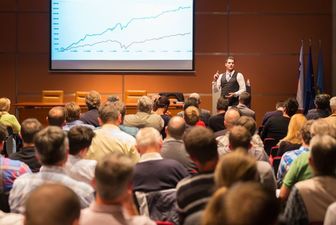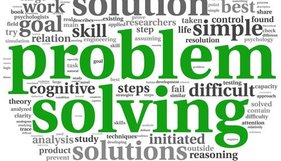 This week was almost identical to last week, the only difference being that presentations were given. We had two days to work on our presentations and then we presented for the rest of the week. These presentations gave us an opportunity to practice our presentation skills and to work on public speaking. Both of these qualities are very important to work on, since we will be having to make many, many more presentations in our lives. I believe this presentation was the longest presentation I have ever had to make before. Usually if I had to make a presentation in school, it was at most five minutes or so. This one, however was somewhere between ten and fifteen minutes. I am actually really glad we had to do these presentations. It really helped me get more comfortable with talking in front of the class. Although I would not necessarily say that it was fun, I would say that it was definitely helpful. These presentations not only helps us work on presentation skills, but they also helped us learn how to be better communicators. We had a couple big questions that we had to make our presentations about, and our goal as the presenter, was to guide the audience trough some information that lead to the resolution of our big questions. We were supposed to be really subtle about everything and weave our ideas together to make the presentation even better, but that was a little challenging. I at least learned how to weave things together little bit more than what I did in previous presentations. Like I said before, this presentation project was actually really helpful.
1 Comment
 During this week, we continued to work on our "What is Literature?" presentations. Many groups in the class have started to work on their actual presentation. My group is one of those who have started their presentation. We are still working on it, since we only started it a few days ago. While we work on the presentation, we are trying to put it together in a smooth manner that transitions well into each thing we talk about. It is important to have smooth transitions link things together so that the presentation is easy to follow and is not choppy. This will help the audience to be more interested in what is being said, and they will be less likely to be confused. It is equally important for the presenter to actually talk about the topic, and not to read from the presentation. When the speaker only reads about their topic from the presentation, they are not really showing their knowledge about the subject, they are merely showing the audience the information they have found. Reading what is on the slide is the same as just showing the presentation to the audience and not even saying anything about it. Smooth transitions, and not reading the slides are both very important in order to really grab the audience's attention. Without those two crucial parts of the presentation, the audience will not be as interested and they will not get as much out of the presentation as they would with smooth transitions and if the presenter did not just read the presentation to them.  This week we spent a lot of time working on our "what is literature" projects. My group chose to present our presentation on theme and point of view. To help us be more productive, our teacher told us an effective process of completing the project. Originally we did not get very much instruction on what we were supposed to do. That was done purposefully so that we could learn how to figure things out on our own. We were still given help if we needed it though, so that we could still work in a productive manner and not just sit there stuck and clueless on what to do. By not giving much instruction, we were able to gain problem solving skills and figure out how to do things on our own. That is an important skill to have in life. There are always going to be problems that we will have to solve without guidance. We were told that in college there might be some professors that will not tell us exactly what to do, and we will have to figure out what to do ourselves. In that case, it is important to learn how to problem solve earlier in life, so that later, when those skills are needed, they are developed and ready to go. To be good at problem solving would make life a lot easier. That is why our teacher chose to present the project to us the way he did. He did not give a whole lot of instructions, but rather gave us more of a push in the right direction at first.  During this week, for some reason it really felt like we learned nothing in AP Lit. However, that is not true. We went over the poem, Bright Star, by John Keats several times over the course of the week, and discussed a couple different things with the class. The first thing we talked about was how talking directly to an object when describing one's self to that object could be more effective. It was decided that it was a more effective way to compare someone to something because if the speaker was to just compare them self to an object, giving the object no personality, then the comparison would be a little more shallow. Where as if the speaker talked to the object, giving it a personality, the comparison would be less shallow. The other thing we talked about as a class, was who we identified with most in the poem. We could choose either the star, the speaker, or the speaker's love. The star was an option because the speaker gave it a personality. When they were comparing them self to the star, they talked directly to it. That is why we were able to identify with the star if we wanted to. I personally felt like I identified with the star the most because I tend to be more of an observer, and I usually see the good in everything. That is what the star was like. We know this because when the speaker was talking to the star, they were saying how the star just watched the earth and its beauty. So in conclusion, the major thing we learned this week was how to effectively compare one's self to an object. |
AuthorWrite something about yourself. No need to be fancy, just an overview. Archives
March 2017
Categories |
 RSS Feed
RSS Feed
